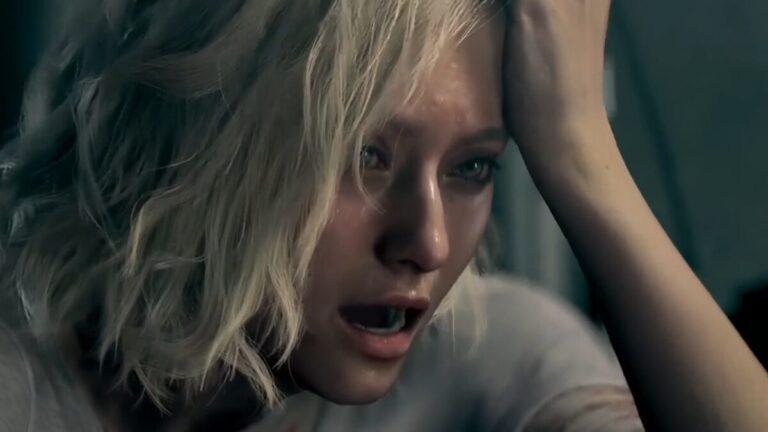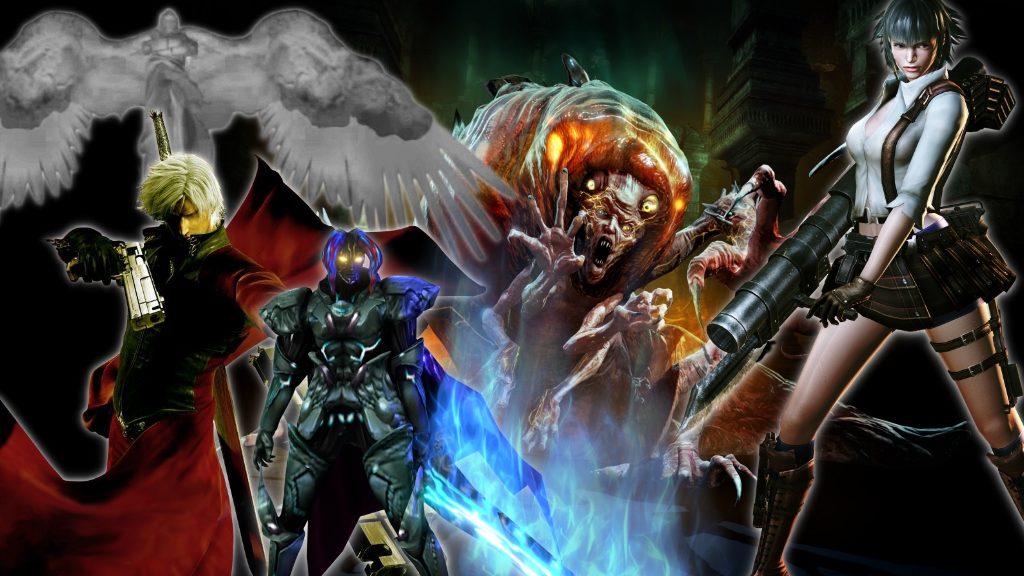
Devil May Cry 5 is almost here, and what better way to celebrate a series known for its stylish action and memorable boss fights than to rank every boss fight in the series, according to style? There isn’t a better way, we checked.
Of course, there are a few rules to our ranking. Since the Devil May Cry series has so many boss fights, and many are repeated, each boss is only allowed one appearance per game. This means that bosses like Arkham, Vergil, and Argosax get all of their appearances lumped into one for the convenience of ranking. The same goes for bosses that are fought by different characters, meaning most of Devil May Cry 4‘s gallery simply receive one entry each. Characters that appear in multiple games get respective entry talking about their appearance as well.
Finally, there are many primary factors we’ve scientifically calculated during our ranking process. The boss’ overall aesthetic, role in the story, encounter design, and any weapons it gives the player all contribute to the overall score. Remember that this ranking is just for fun and that there is no objective truth behind our opinions. Except that most of Devil May Cry 2‘s bosses are bad, but who is going to fight us on that?
So without further ado, let’s work our way to the top of the style meter, starting from the very bottom of the Devil May Cry barrel.
Warning: Spoilers for the entire Devil May Cry series follow. So if you’re still brushing up on the series before Devil May Cry 5 comes out, you’ve been warned.
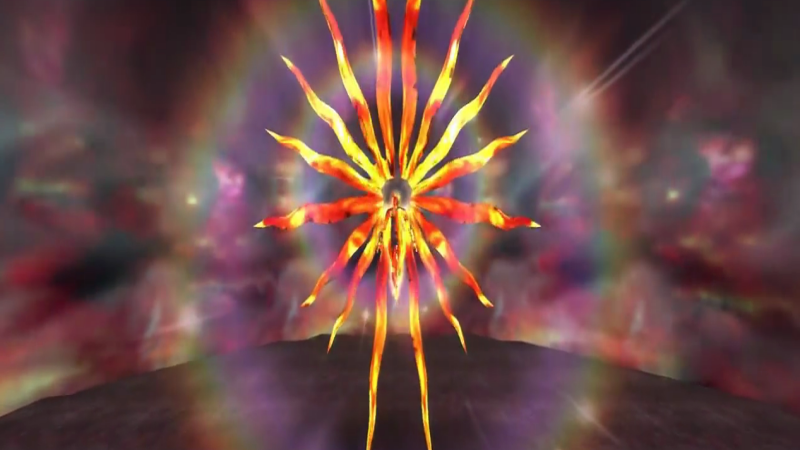
44. Argosax
Devil May Cry 2 is infamous for many reasons, and one of the biggest is the lackluster boss designs. Coming hot off of the first Devil May Cry‘s wonderful rogues gallery, Devil May Cry 2‘s uninspired, cliche offerings can’t help but disappoint. Nowhere is this more evident than with Argosax.
Built up to be the primary antagonist of the game through what can loosely be called Devil May Cry 2’s narrative, Argosax looks like a disappointing secret character from a Japan-only Dreamcast fighting game. Lacking any of the personality to speak of, his two forms consist of reusing assets from previous boss fights and being covered in a single moving texture that appears to be based on melting tropical-flavored popsicle. If he were just another chump, he might be higher on the list, but as a finale in a Devil May Cry game, Argosax just Argosucks.
Rank: That feeling you get when you keep getting a “D” rank, but also keep getting hit and losing it.
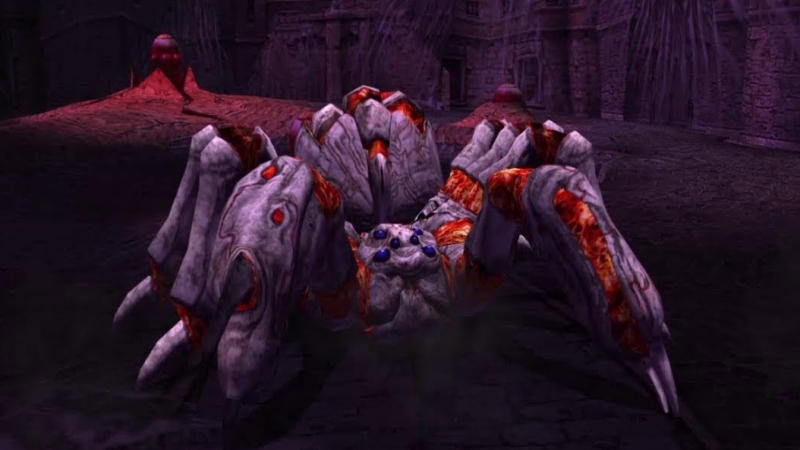
43. Phantom (2)
The original Phantom boss fight in Devil May Cry ranks up there with some of gaming’s greatest ever. It remains a perfect introduction to the game’s hard-knock gameplay and serves up some of Dante’s first one-liners. Over the course of Devil May Cry, Dante and Phantom face off again, forming a bitter rivalry as Phantom continually tries and fails to defeat him. So when one of the most recognizable enemies in the series returns for a sequel, why wouldn’t fans be excited to see him?
Because Phantom’s inclusion in Devil May Cry 2 amounts to little more than a footnote. Recycled animations and attacks, coupled with DMC2‘s lack of difficulty, make the fight way too easy, and Dante never even gets to quip at him. Rest in peace, flaming demon tarantula. You deserved better.
Rank: D
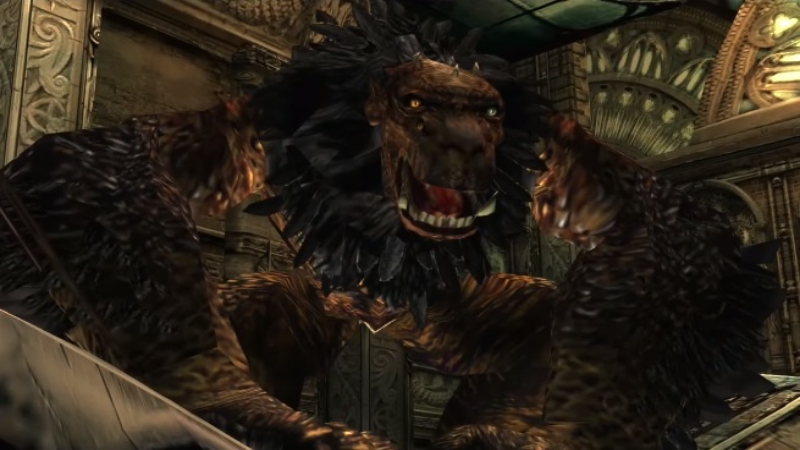
42. Oranguerra
You might notice many Devil May Cry 2 bosses share a familiar theme; take an animal and make it bigger. On paper, this approach seems cribbed from Phantom and Griffon in the first game, but each of them had some kind of redeeming quality that set them apart. For Oranguerra, there isn’t anything remarkable about him aside from being a big demon-monkey.
Rank: D
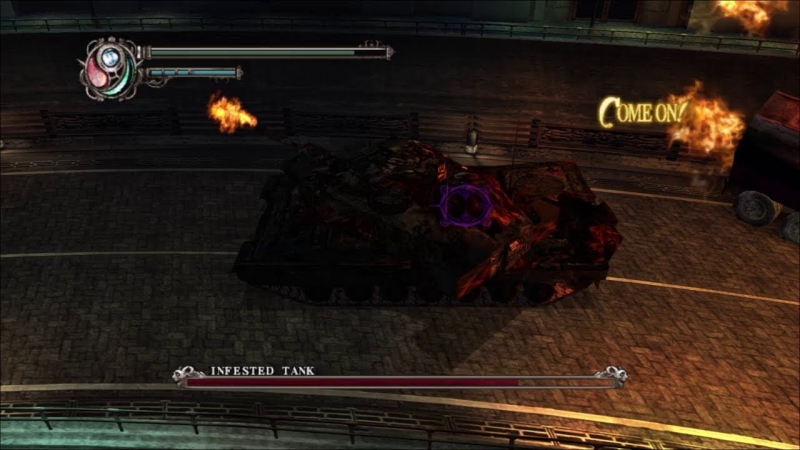
41. Infestant
While Devil May Cry 2 features an impressive number of bosses, few are memorable thanks to the game’s incredibly easy difficulty. With an over-reliance on firearms, sometimes entire bosses can be taken out from a distance. Such is the case with the Infested Chopper, which is a ranged boss fight against a flying bullet sponge.
Far from the exciting action DMC fans are accustomed to, the Infestant also surfaces in another battle with the Infested Tank. Somehow this fight is even easier, as players can simply run up and hack away at the tank as the war machine flails wildly, unable to target Dante with its cannon up-close.
Rank: D
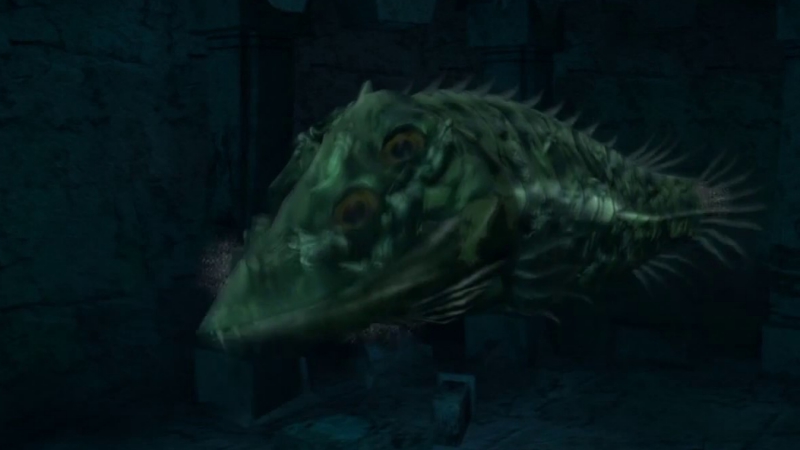
40. Tateobesu
Tateobesu is just a giant fish. Not a cool giant fish, though. What’s worse, it can only be fought underwater during Lucia’s campaign, making it an unnecessary chore. There’s nothing memorable about the fight or the enemy’s design itself, making this piece of chum little more than padding.
Rank: D
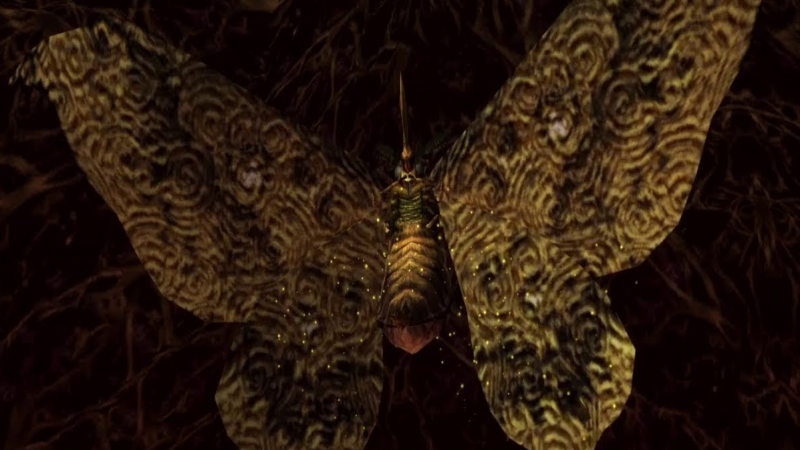
39. Noctpteran
It’s a giant bug, and like Tateobesu and Oranguerra, there is nothing particularly memorable about Noctpteran’s boss fight beside how annoying it can be. There’s a semblance of actual game design as players are given Larvae to fight, but nothing here presents much of a challenge.
Rank: D
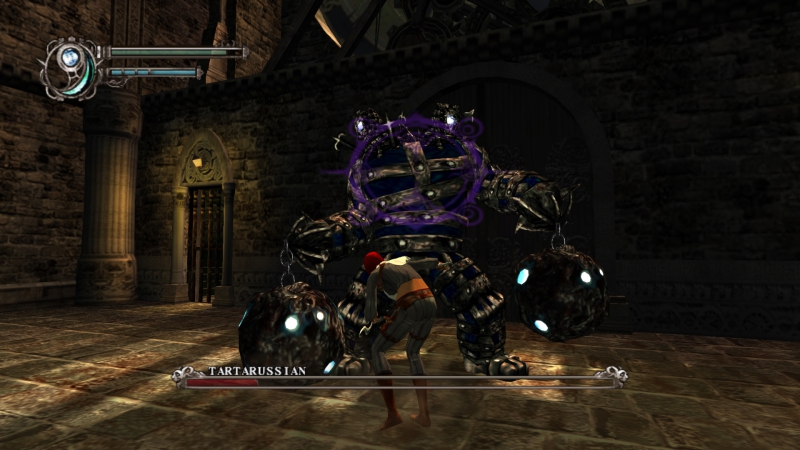
38. Tartessian
One of the first bosses in Devil May Cry 2, Tartessian actually features a neat two-headed design and some memorable moves with its dual ball-and-chain weapons. It’s a stylish design that’s unique and appropriately gothic. Score one for Devil May Cry 2.
Rank: D
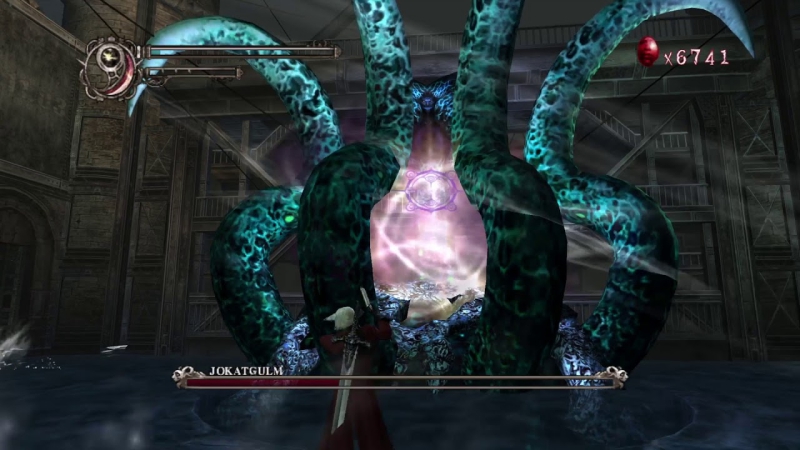
37. Jokatgulm
Jokatgulm is one of the few pieces of Devil May Cry 2 that actually shows some effort to surpass the first game. An interesting eldritch design that forces the player to think with poison attacks and a need to focus on breaking certain tentacles to get at the creature’s core, it’s still made too easy due to DMC2‘s generous health regeneration in devil trigger, but it shows a spark of life missing from most fights in the game.
Rank: D
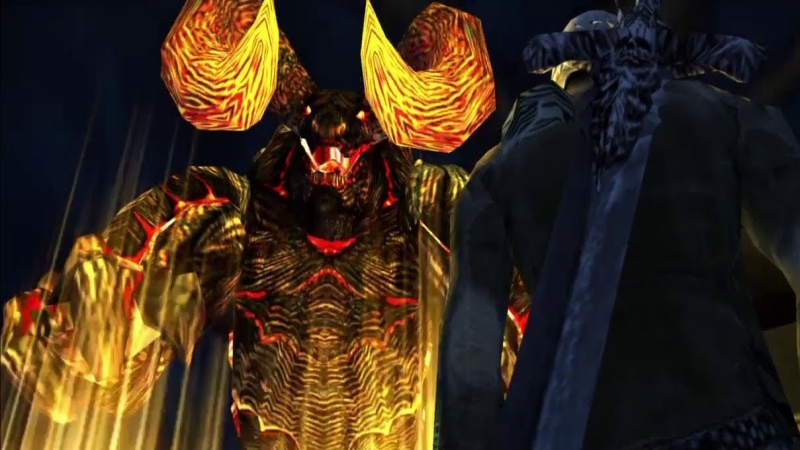
36. Furiataurus
After a game and a half, Dante finally gets to just fight something that looks like an actual demon. Furiataurus is a flaming Minotaur, but that’s still way more stylish than giant bugs, monkeys, and fish. It’s summoned as a distraction so Arius can make a getaway, so no extra points for having a blood feud with Sparda or something else. He’s kinda just doing what he’s told, but I respect Furiataurus for looking good while doing it.
Rank: D
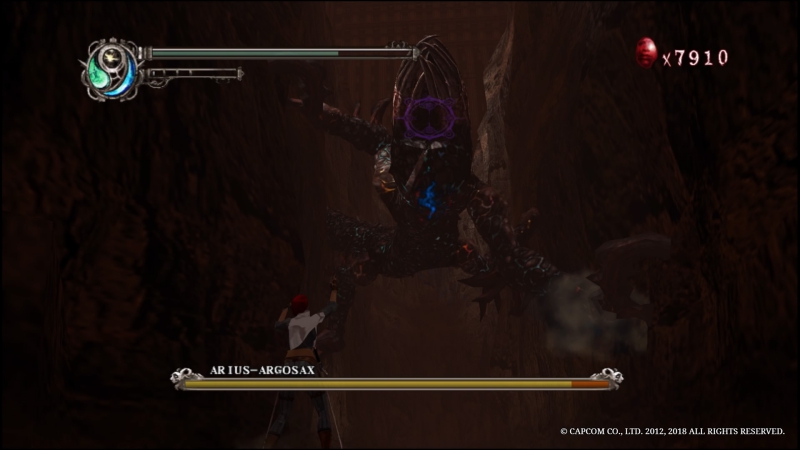
35. Arius
As DMC baddies go, Arius is an absolute chump. He’s tacky and I hate him. Yet, even though he contributes almost nothing to Dante’s campaign, Arius gets a chance to shine in Lucia’s Devil May Cry 2 adventure.
Lucia is forced to destroy Arius during the game’s climax. Possessed by Argosax, Arius’ body morphs several times into new, disgusting monstrosities that would make Resident Evil proud. He’s still a bad villain, but he’s also the only one that gets a speaking line in Devil May Cry 2, so that’s gotta count for something I guess.
Rank: C
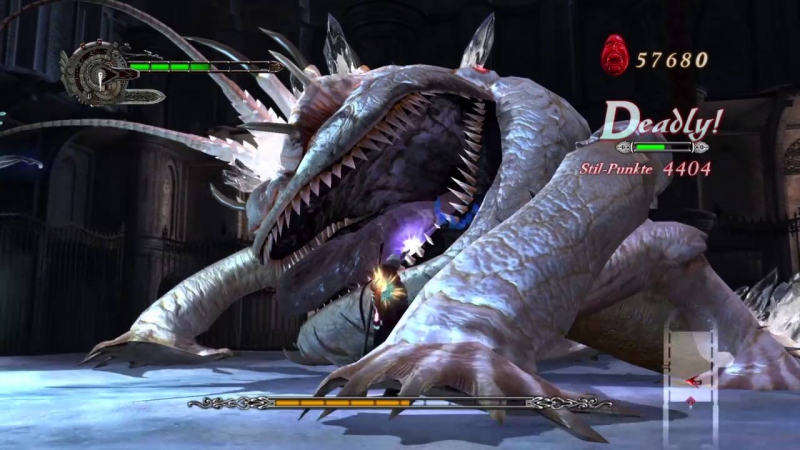
34. Bael/Dagon
The first non-DMC2 entry on our list is the double-booked toad team from Devil May Cry 4. While Bael and Dagon sport Sumerian-inspired names and have very sexy tentacle-based lures, they’re still just giant frogs. Hearkening back to DMC2-era boss design conventions is probably the worst sin Devil May Cry 4 commits, and thankfully it only happens with these two chuckleheads.
Rank: C
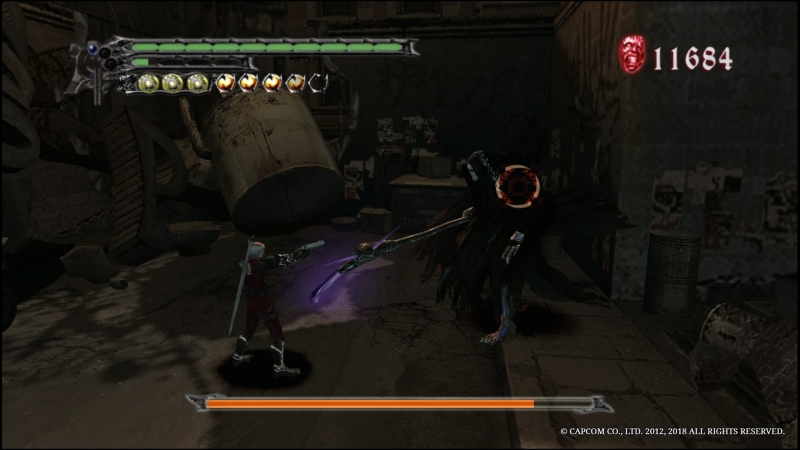
33. Hell Vanguard
When it appears as the first boss Dante faces in Devil May Cry 3, the Hell Vanguard seems to be a great, imposing villain. However, later in the game, Hell Vanguard gets rolled into the regular enemy roster, sometimes coming at players two at a time. What’s more, they’re basically just bigger versions of the game’s basic Grim Reaper-inspired enemies. So not only does Hell Vanguard get demoted to a cannon fodder-tier enemy, but it doesn’t even have its own style.
Rank: C
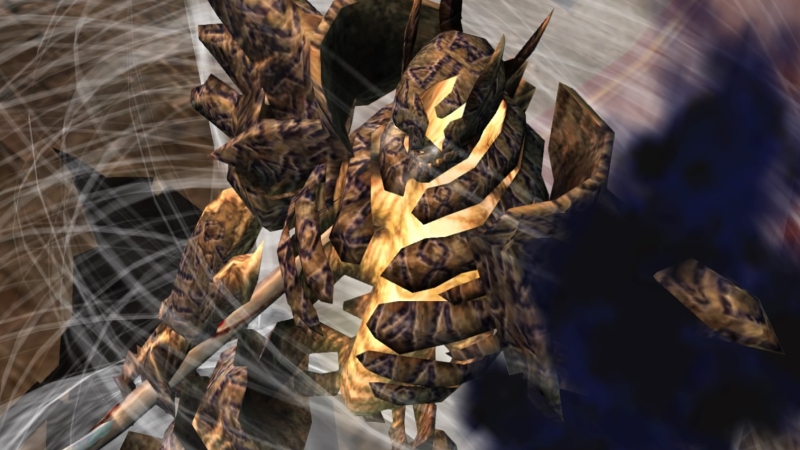
32. Freki, Geri, and Bolverk
The only reason Bolverk and his pet wolves Freki and Geri aren’t slumming it back with the rest of the Devil May Cry 2 misfits is because Bolverk actually has some backstory connected to Dante’s father, Sparda. In the enemy file entry for Bolverk, it’s revealed that Bolverk seeks revenge against Sparda’s heir. It’s a bummer that none of this is explicitly stated in Devil May Cry 2, otherwise, Bolverk could have been a real standout with his skeletal design and ominous, fractured skull.
Bonus style points for two pet wolves.
Rank: C
31. Other Mundus
The original Mundus was a top-tier badass with multiple forms. While most of the DmC: Devil may Cry boss roster are solid, the reboot’s interpretation of Mundus left much to be desired. A one-stage fight against the primary antagonist of the game fell short of Devil May Cry standards with telegraphed attacks and an incredibly uninspired design.
DmC attempts to adapt the bright lava-fused design of Mundus’ later forms from the first game, but because of the scale and the way its rendered, Mundus comes across looking more like a pile of goop with streaks of red Kool-Aid. While the human form of Mundus gets points for channeling Tony Soprano and tying in Mundus’ original three-eyed design, the disappointment of his final appearance can’t be understated.
Rank: C
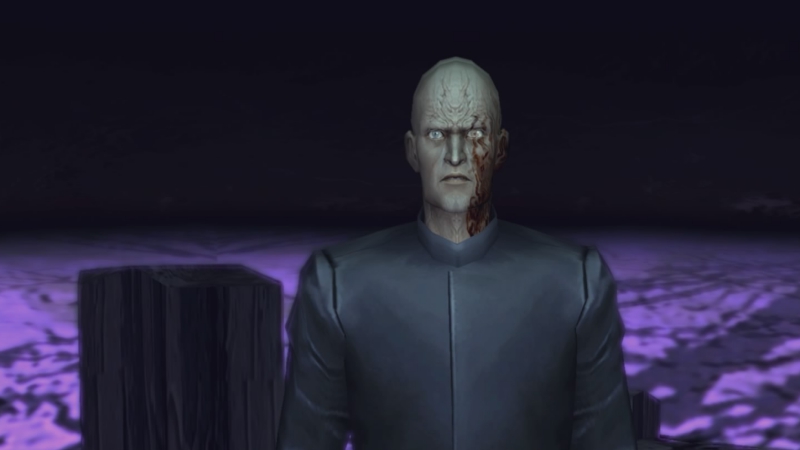
30. Arkham
While the primary focus of Devil May Cry 3 is the ongoing feud between brothers Dante and Vergil, the family squabble between Lady and her power-hungry father Arkham also takes up a good amount of screen time. Lady is a wonderful character in her own right, and while Arkham contributes heavily to a mid-game plot twist, he’s an incredibly one-note villain.
Oh, and he dies as a giant, formless blob. Once he absorbs the power of Sparda, Arkham takes on one of the worst appearances of any boss in the series. Devil May Cry 3 features a plethora of fantastic, otherworldly enemy designs, but Arkham’s final encounter is easily one of the worst. When he’s not a blob, Dante fights him as an annoying jester who…smacks his ass at the player. Class act, this one.
The only reason Arkham doesn’t fall lower on the list is due to how he ties into Lady’s personal story. Other than that, he’s a chump.
Rank: C
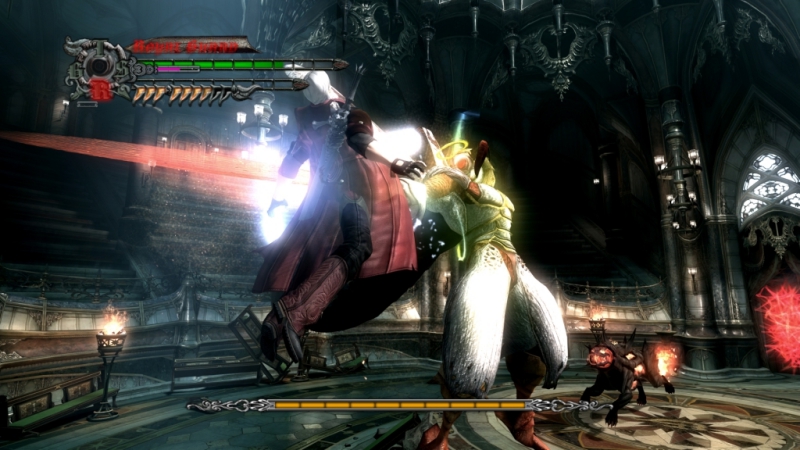
29. Agnus
Agnus is a bizarre character, and that’s saying a lot for a series that starts at giant talking fire-spiders. While he acts like a mousy scientist, his human form looks like a Hot Topic-obsessed middle schooler fell into a vat of steroids and marinated for ten years before joining a monastery. He’s got a monocle. I don’t even have a joke about that, it’s just weird.
The head scientist of the Order of the Sword, Agnus gets blasted into his “angelic” form during Nero’s first contact with Yamato. If you thought he was weird before, he turns into a giant bug. Like a bipedal bug though.
His fights are repeated between Dante and Nero, but he does get points for playing along with whatever stage play Dante was doing when they met. Improv skills and a bug-themed fursona? Maybe I misjudged you Agnus. This guy might be okay after all.
Rank: C
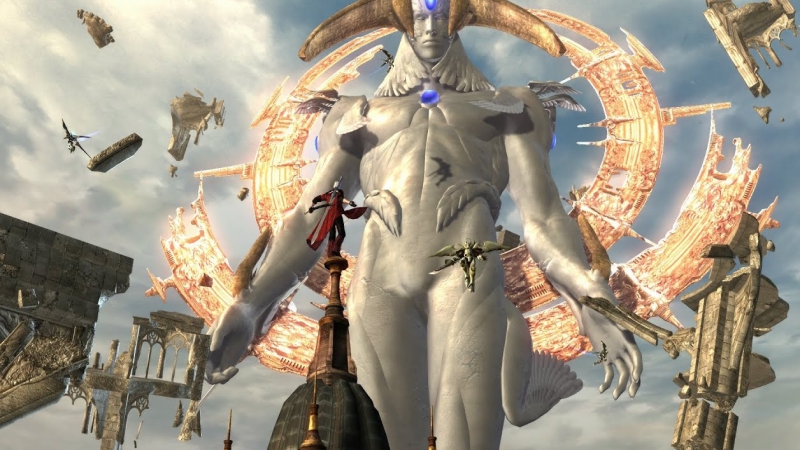
28. The Savior
Sanctus’ plan to use Sparda’s power to take over the world is surely the grandest scale any Devil May Cry villain has worked on so far, and The Savior is evidence of that. A massive statue housing Sanctus, Nero, and Kyrie, Dante is tasked with defeating it on the outside while Nero fights from within.
The boss battle against the Savior is really an entire level of gameplay as Dante must first destroy several large crystals to weaken the statue. While it is a bit annoying due to confusing jump pad-based navigation, the sheer scale manages to be impressive, even a decade after Devil May Cry 4‘s initial release.
Rank: C
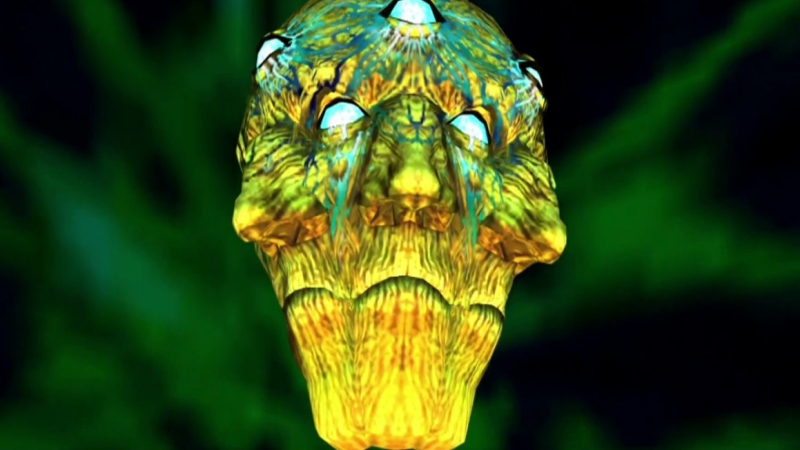
27. Trismagia
This three-faced weirdo is one of two standouts in Devil May Cry 2‘s otherwise mediocre assortment of baddies. Warping Dante and Lucia into a strange shadow dimension during their assault on Arius’ headquarters, Trismagia is easily the best-designed boss in the game thanks to his multiple types of elemental attacks.
Rotating between three different faces, Trismagia allows one face at a time to take damage while the other two hurl unique attacks associated with whatever element the face is colored for. For example, the blue face throws out ice attacks while the red face uses fire. It’s a clever, creepy design that, despite issues with the game’s lock-on targeting, is a very memorable moment in a game that desperately needs them.
Rank: B
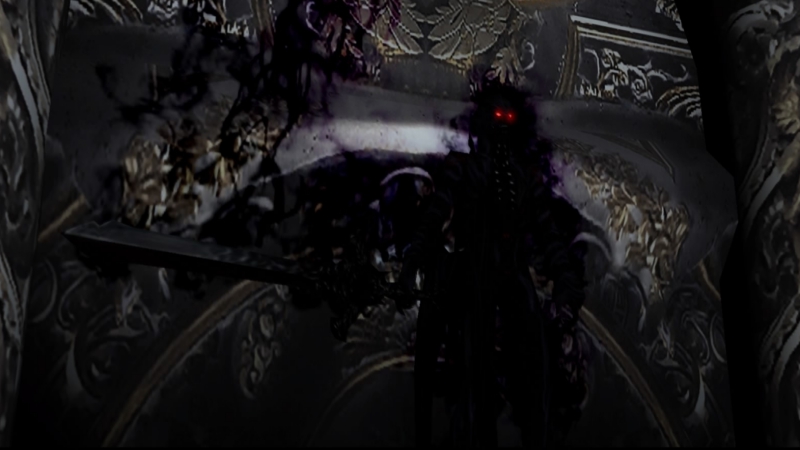
26. Doppelgänger
A shadow version of Dante that he encounters near the end of Devil May Cry 3, Doppelgänger makes quite an impression in his intro cutscene, mimicking Dante’s every move as the two face off.
Despite being really cool up front, Doppelgänger is an incredibly easy boss to fight. Once players learn how to time their attacks on the lights that will leave him vulnerable while dodging his attacks, the fight ends quickly. However, the unique light mechanic and the fact that he becomes one more style at Dante’s disposal mean that Doppelgänger might lack challenge, but he’s still a memorable encounter.
Rank: B
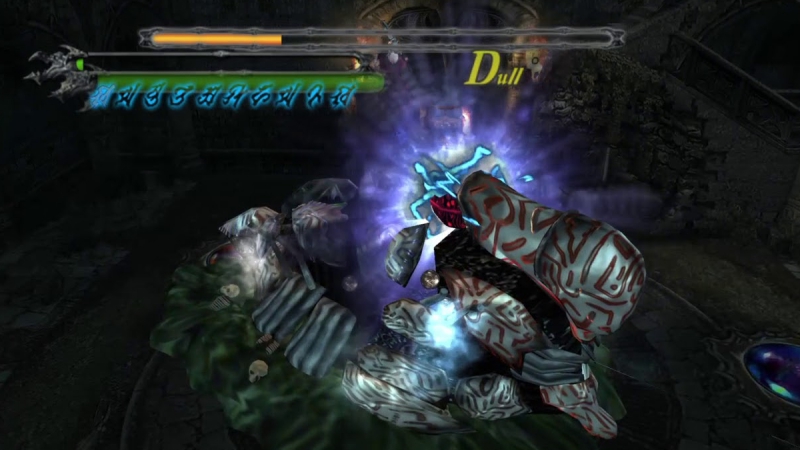
25. Nightmare
Of the bosses in the first Devil May Cry, Nightmare is easily the least interesting. After forming a bitter rivalry with Phantom and meeting the imposing Griffon, Dante faces Nightmare, who is really little more than a siege tank made of black goop.
Mechanically, Nightmare is an interesting fight due to the player needing to take down his defenses before attacking his “core.” A strange amalgam of eldritch biology with mechanical purpose, Nightmare certainly has an interesting design with interesting mechanics to match, but with no personality to speak of, Nightmare comes off as a hollow shell.
Rank: B
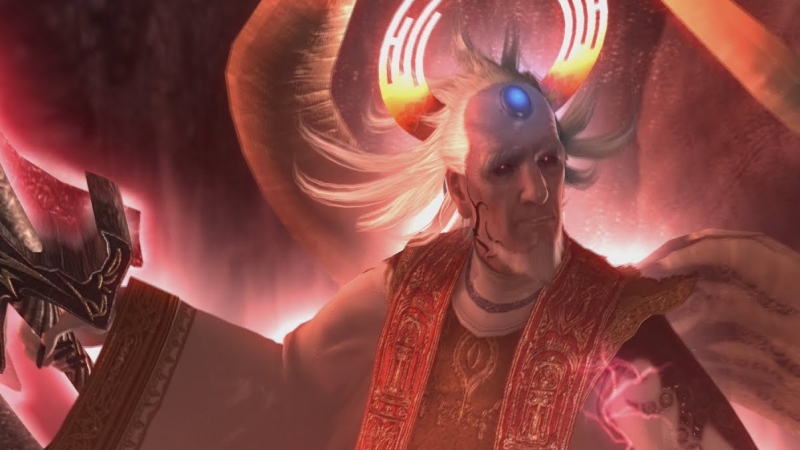
24. Sanctus
Look, there’s not a whole lot to Sanctus. The leader of the Order of the Sword lacks charisma and physical intimidation, and his plan for world domination was felled by putting crystals on his giant statue.
That being said, he still managed to harness the power of Sparda through The Dark Knight’s own blade and used Nero’s power to kick-start a giant statue of The Dark Knight. Also, his final form, complete with giant devil horns, is actually pretty badass for such an old fart. Truly, you can never get too old for Heavy Metal.
Rank: B
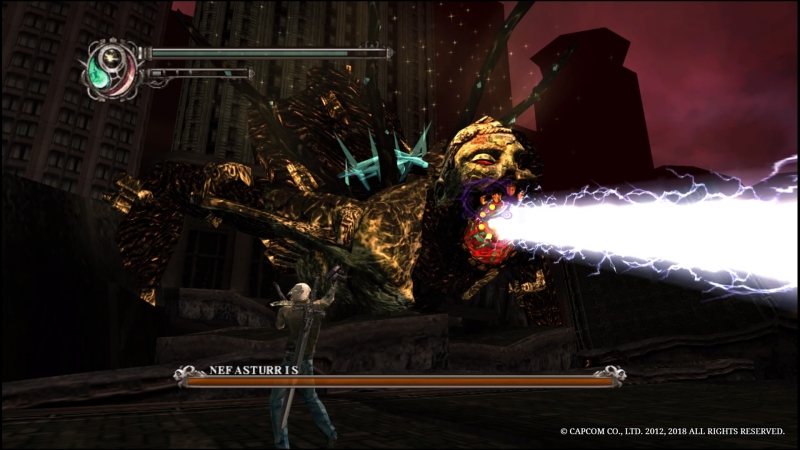
23. Nefasturis
Nefasturis crawls this far over the competition nearly on the strength of its appearance alone. Appearing suddenly during Dante’s trek through the city of Ouroboros, Nefasturis seems to bend reality itself as he emerges from the center of a skyscraper.
Nefasturis has a similar design motif to Mundus in the first game, looking like a malformed renaissance statue housing a fleshy demonic entity on the inside. With the boss fight’s sheer scale, memorable introduction, interesting design, and even a slight challenge, this might be the best boss fight in the entire game.
Rank: B
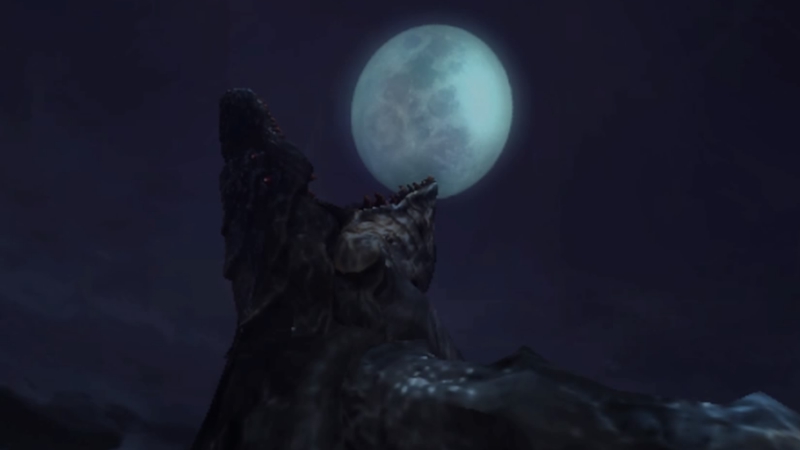
22. Leviathan
A mysterious demon-whale that flies around Temen Ni Gru, Leviathan eats Dante when he jumps from the top of the tower after awakening his Devil Trigger. It’s a ridiculously over-the-top introduction cutscene, but it leads to a level where Dante must carve his way to Leviathan’s heart and destroy it to escape.
The fight itself forces the player to fight three unique cores, alternating between two smaller targets to lower the defenses around Leviathan’s heart. It’s a fight that keeps players on their toes with additional enemies, and rewards the player with an awesome scene of Dante escaping Leviathan by cutting through the creature’s eye. Good design, great execution, and a memorable death; you can’t really ask for more than that.
Rank: B
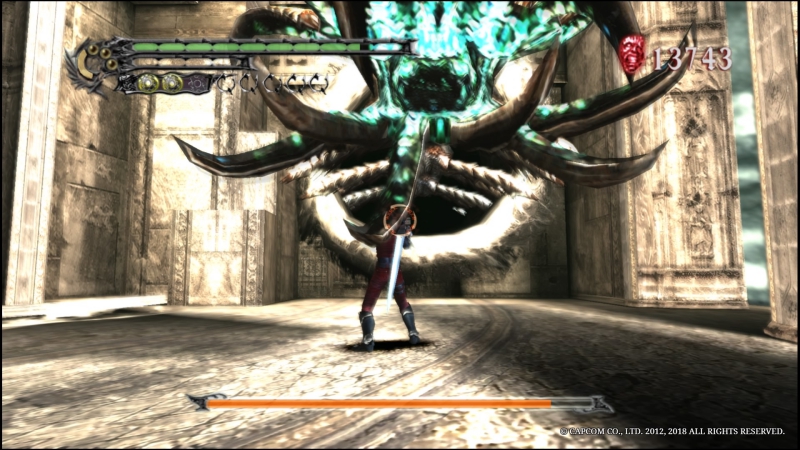
21. Gigapede
The first boss Dante encounters upon entering the Temen Ni Gru, the Gigapede might not get any kind of introductory cutscene, but it remains a memorable fight thanks solely to its unique mechanics.
Taking place in an oblong arena, the Gigapede fight requires players to jump on the massive bug’s back area as it flies by in order to deal hefty damage. To effectively take down the beast, players must properly utilize timing to not only land on Gigapede’s back, but to dodge its attacks. It’s a fight that requires skill to handle efficiently, and wasting too much time can have a major impact on player’s style rank at the end of the mission.
Rank: B
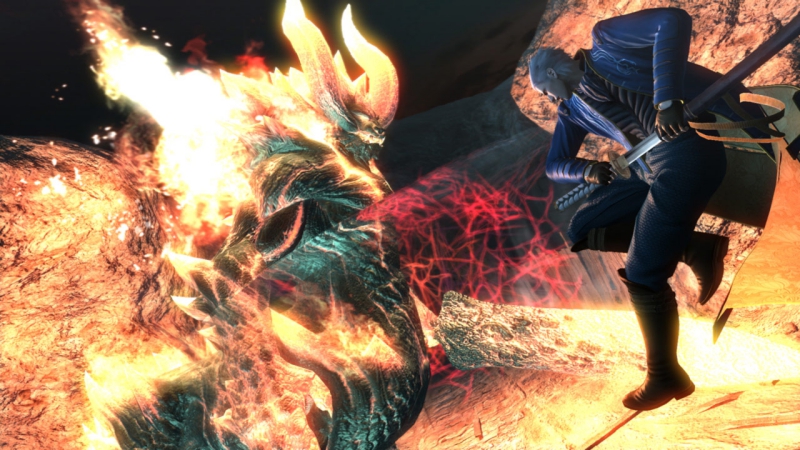
20. Berial
The “Conqueror of the Fire Hell,” Berial is as big and dumb as they come, but the sheer scale of his fight and his interactions with Devil May Cry 4 heroes Dante and Nero put him into the top half of our roster.
A hulking brute battled in an abandoned mining town, Berial puts new players’ skills to the test, requiring timing and quick reactions to survive against. This is especially true on harder difficulties, where his animations have shorter startups and come at the player even faster. His defeat at the hands of Dante also results in his death, as he refuses surrender and tries to take out the Legendary Devil Hunter in a kamikaze blaze. It doesn’t work of course, but you gotta give a guy credit for sticking to his guns.
Rank: B
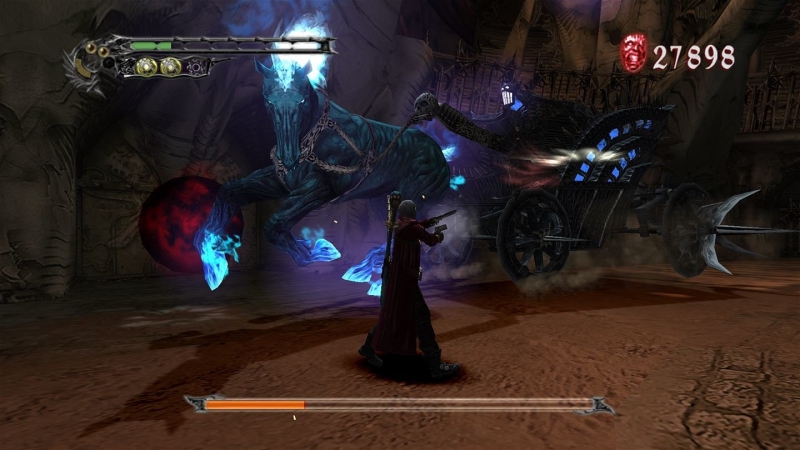
19. Geryon
Geryon is a time-bending giant demon horse with a chariot that fires missiles. He’s also covered in blue fire. It should be easy to see why he makes it so far on this list based on that criteria alone.
Unfortunately, once players get used to his attack patterns, Geryon can be a pretty easy fight, even on harder difficulties. That having been said, he still packs a wallop for players who aren’t careful, meaning that he’s never quite a pushover.
Rank: B
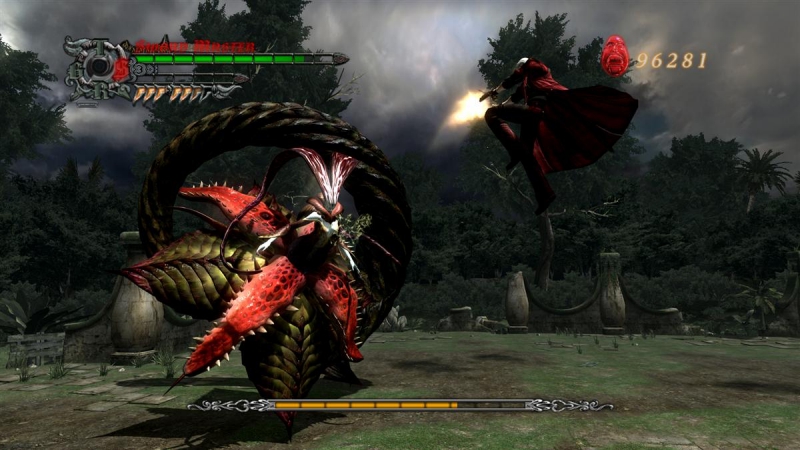
18. Echidna
Echidna contributes more to Devil May Cry 4 than most of the other bosses. She’s the mastermind behind the saplings that take over standard enemies and transform them into intimidating dervishes of combo-interrupting pain, making her an intricate part of several levels worth of enemy and encounter design.
She also has one of the coolest aesthetic designs in the entire game, finely balancing a Poison Ivy-inspired torso with a demonic flying serpent exterior. While fighting her, players must use careful spacing and timing as she alternates between three forms. Her battle with Dante also awards the player with Gilgamesh, which handily beats out Lucifer and Pandora as the best of the three boss-earned weapons in Devil May Cry 4.
Rank: B
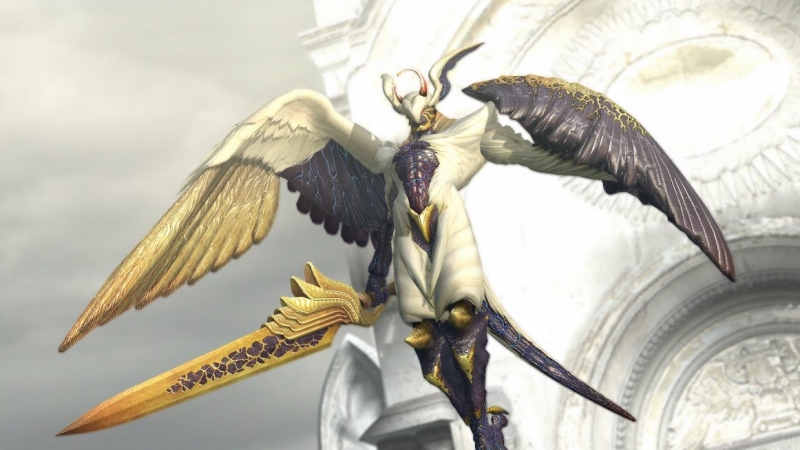
17. Credo
While Nero’s battle with Credo is the result of a misunderstanding that could have easily been avoided if the two just talked their shit out, Credo’s ensuing boss fight is incredibly memorable and challenging to boot. Another point in his favor is that he’s one of the few bosses that only Nero can fight.
Transforming into his angelic appearance, Credo’s design fuses Devil May Cry 4‘s ultra-anime aesthetic with classic Renaissance themes, making for one badass design. The fight also has one of the best arenas in the game. Taking place right outside the Order of the Sword HQ, Nero and Credo duke it out on a plateau suspended high above a body of water, with brilliant rays of sun gleaming over distant mountains. It’s a beautiful setting that makes for a memorable fight.
Rank: B
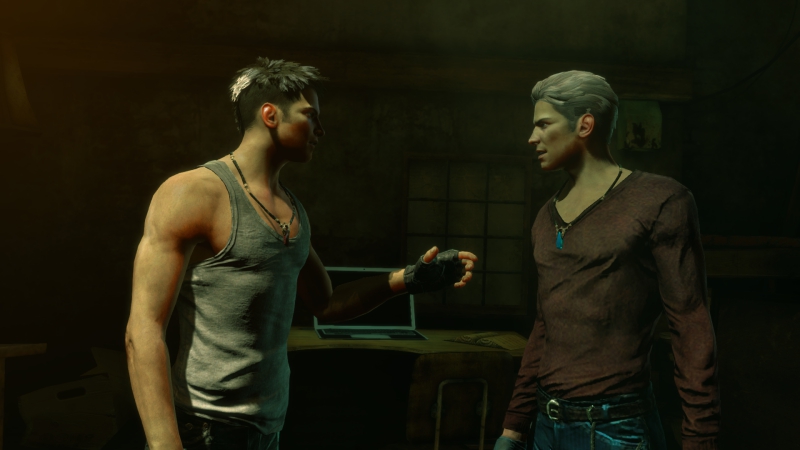
16. Reboot Vergil
As reboot characters go, DmC: Devil may Cry‘s version of Vergil isn’t as bad as Mundus, but it can’t come close to the character’s appearance in Devil May Cry 3. He retains a similar appearance, weaponry, and even motivations, but DmC‘s Vergil has the benefit of a late-game plot twist where he turns on his brother and reveals his ultimate goal was to subjugate humans the whole time.
It’s a major dick move, but not the only one he makes. DmC‘s Vergil is a straight-up sociopath, manipulating Kat and shooting the pregnant demon Lilith to kill her and Mundus’ offspring. Reboot Dante might have an edgy attitude, but reboot Vergil posts on Reddit daily and watches Jordan Peterson videos. He acts like a rebel, but ultimately just wants to reinforce systems of oppression in his favor. However, the game doesn’t ask players to like these qualities at the end of the day, making him one hell of a villain by the end of the game.
Oh, and his boss fight ain’t bad either. It plays a lot like Devil May Cry 3‘s Vergil and even ends by giving a justification for reboot Dante’s hair turning white.
Rank: B
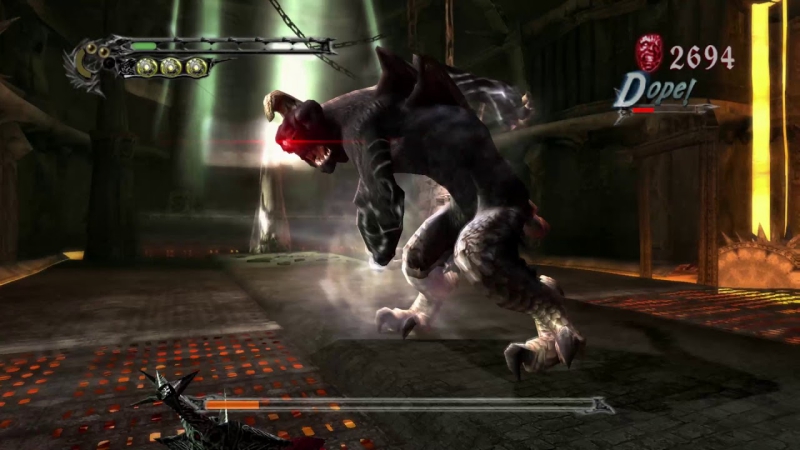
15. Beowulf
A feathered freak with some serious beef with Sparda, Beowulf presents a tricky fight to master. He blasts bolts of light, hurls giant cages, and charges across the arena like Dante owes him money. But if players can get at his one good eye and memorize his patterns, they just might stand a chance.
He’s ultimately felled by Vergil, but the Devil Arms he grants eventually make their way to Dante. Every Devil May Cry game except for DMC 2 have included a gauntlet-type weapon, and Beowulf might have them beat with lightning-fast flurries of punches and kicks. His design is a bit unorthodox, but the fight itself, plus his backstory with Dante and Vergil’s family, bring him into a higher tier of style than most.
Rank: A
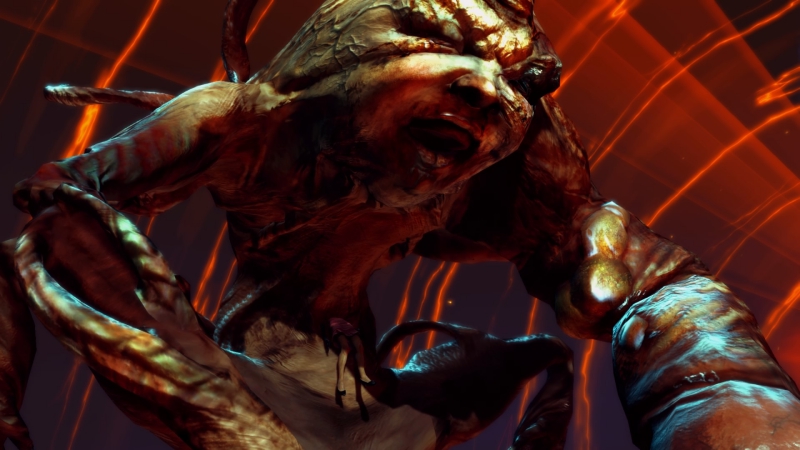
14. Lilith
DmC‘s nightclub levels are a visual highlight in a game packed full of surreal, colorful imagery. As Dante makes his way towards a final confrontation with Mundus’ mistress Lilith, she taunts him endlessly, giving the player plenty of excuses to want her taken down a peg.
But when their moment finally arrives, she unleashes the demonic spawn gestating inside her, forming a massive symbiotic monstrosity. Fighting Mundus’ spawn can be challenging on harder difficulties as players need to use Dante’s angelic and demonic pull abilities to get in close while staying away from large swipes and swings. Like the nightclub stage preceding it, the battle against Lilith is bursting with color and creative imagery, bolstered by a scorching soundtrack.
Rank: A
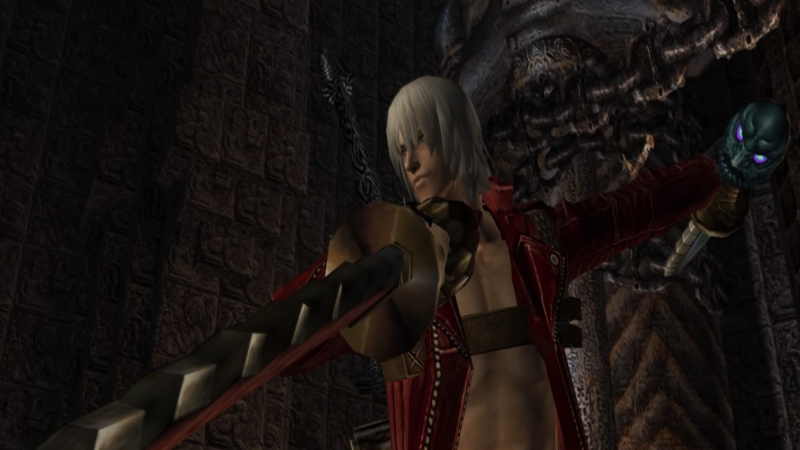
13. Agni & Rudra
The wisecracking demon brothers Agni and Rudra make quite the impression in their introductory cutscene, seemingly viewing Dante as a “guest” rather than a target. Duty-bound to fight him, the two brutes team up to fight Dante at the same time.
This dual-boss approach requires a little strategizing on the players part, as when one of the pair is defeated they can be revived if the player takes too long dispatching the other. Once they both fall, they make for one of Devil May Cry 3‘s most iconic weapons. Agni and Rudra allow Dante to wield dual swords carrying the powers of wind and fire, with the hilts of each sword housing the heads of the demon pair. Dante permits them to accompany him, on the singular condition that they don’t speak. Seems like a fair deal.
Rank: A
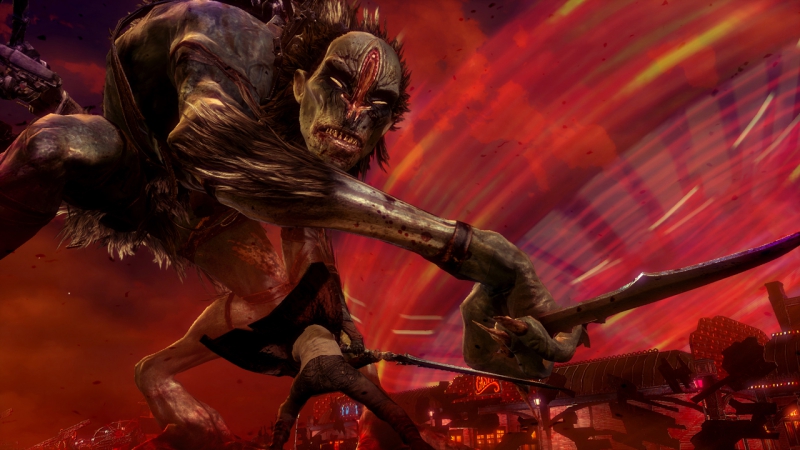
12. Hunter Demon
The first boss of DmC: Devil may Cry manages to make a strong impression. A massive predator sent to kill Dante, the Hunter Demon drags Dante into Limbo and chases him across a demonic fairground. Technically, the pursuit makes up most of the first level as the Hunter throws waves of demons and even a Ferris Wheel at Dante. When Dante gets cornered, he is finally forced to dispatch the towering demon, who has a grappling hook and a massive knife at his disposal.
While the Hunter Demon fight itself isn’t too challenging, especially for series veterans, his design is absolutely inspired. A strange blend of simian and canine influences, his equipment gives the impression of being an experienced hunter. He’s utterly unlike anything else in the entire series, yet still manages to feel natural next to other demons like Echidna and Beowulf. He’s ugly and mean and one hell of a way to start a game.
Rank: A
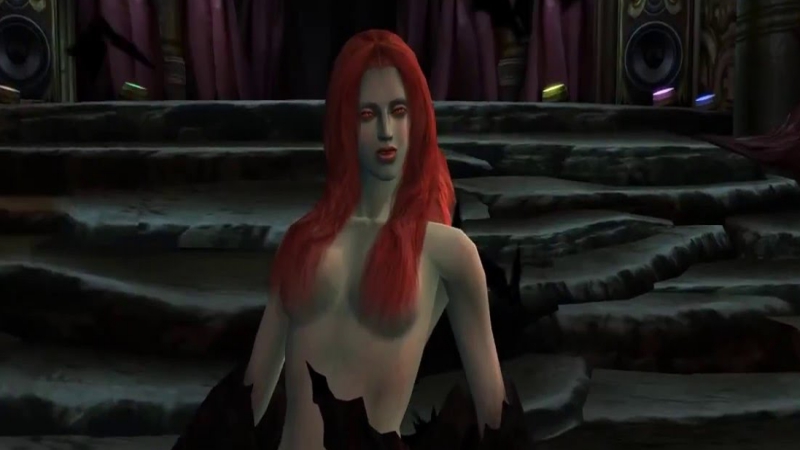
11. Nevan
On his trek through the Temen Ni Gru, Dante eventually stumbles across a concert hall for some reason. Inhabited only by Nevan, a lithe redheaded siren who takes several personality notes from Darkstalkers‘ Morrigan Aensland, Dante soon comes to realize that he should focus less on flirting and more on fighting.
While Nevan’s design initially seems gratuitous, it ultimately fits with her seductive personality. With several phases and waves of attacks to memorize, Nevan can be one of Devil May Cry 3‘s harder boss fights due to her constant shield of bats that need to be destroyed before dealing damage. She can also restore her life at the cost of the player’s own life bar if they aren’t careful, making her absolutely deadly to anyone just hacking and slashing their way through the game.
Of course, Nevan also grants Dante one of the coolest weapons in the series; an electrified demonic scythe/guitar. Rock On.
Rank: S
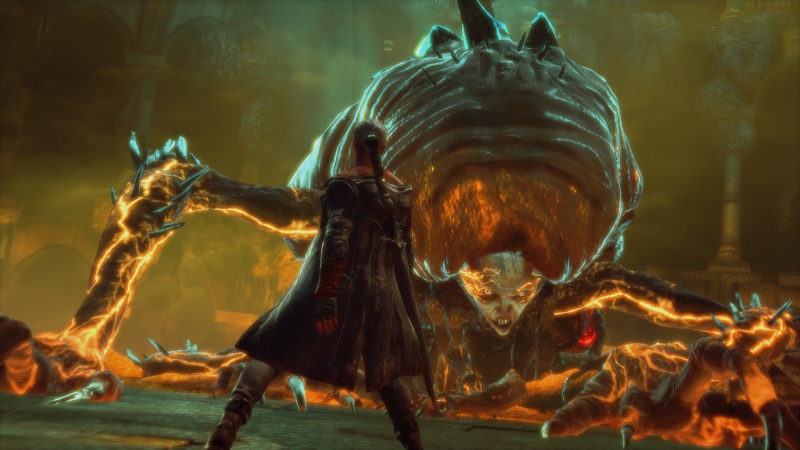
10. Succubus
The secret ingredient behind the mind-altering soft drink Virility, Succubus is one of the most memorable fights in DmC thanks to a variety of setpieces and an overabundance of visual style.
Alternating between three platforms, the fight sees players dodging attacks in tight quarters to stagger the wormlike demon. Once staggered, players need to unhook a few cables from her fleshy exterior to send the demon into a river of raw demonic sewage. It’s all kinds of gross to think about.
But it doesn’t end there, as Dante must navigate the collapsing chamber as Succubus tries to drag him down into the caustic mess. Her fate is ultimately sealed when she contracts a sudden case of “large industrial fan to the face,” leaving her with a few mixed feelings – and brains.
Succubus works because of how flashy and fluid the fight plays out, alternating seamlessly between gameplay, cutscene, setpiece, and transition animations. As a cohesive look at how to craft a memorable Devil May Cry boss fight, it deserves to stand above many others on this list.
Rank: S
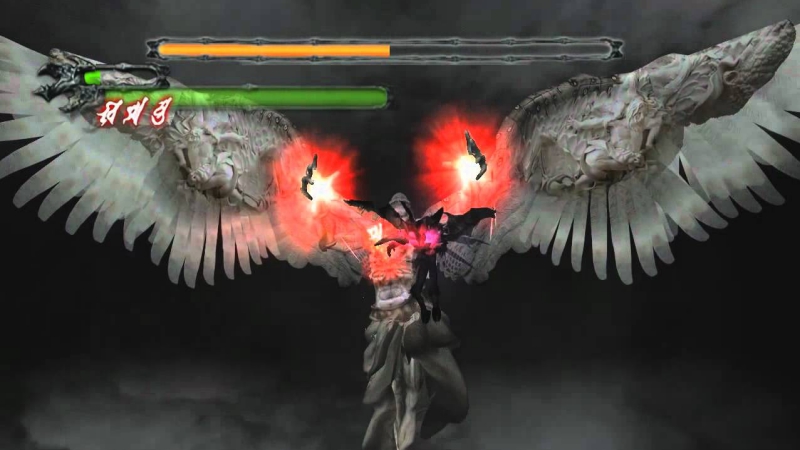
9. Mundus (DMC1)
Cracking our top 10 is the series first major antagonist, and it shouldn’t be any mystery as to why. Mundus is a textbook example of how to build up the mystery around a big bad without explaining their motivations in overwrought cutscenes or fleshing them out with unnecessary backstory.
From statues in his likeness to raining punishment on the minions who fail him, Mundus’ presence can be felt throughout Dante’s first adventure. His glowing red eyes and intimidating appearance when the two finally meet make for a fantastic first impression, even though players don’t see him until the very end of the game.
Then there’s his boss fight. While the first phase of Mundus’ battle begins by inexplicably changing gameplay styles to a Virtual On-style shoot ’em up, his second and third forms are far more memorable. Dragging Dante to Hell itself, Mundus statuesque form begins to crack, showing the slimy demon beneath. In classic monster fashion, he comes back for one more fight when it looks like credits are about to roll, giving Trish and Dante a chance to team-up and dispatch him with an iconic one-liner.
Rank: S
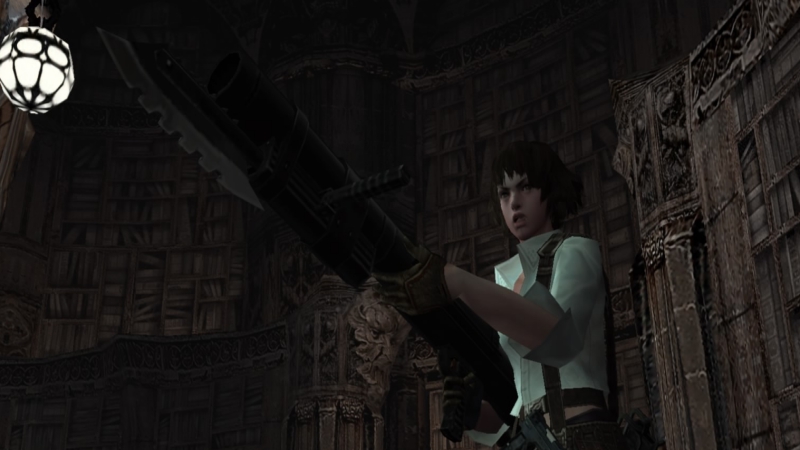
8. Lady
In terms of style, Lady is easily in Dante’s league with her iconic bayonet-equipped bazooka and awesome character design. Even taking Dante and Vergil’s arcs from Devil May Cry 3 into account, Lady might also have the best character development of the bunch. Unlike the rest of the cast, Lady is actually just a normal human who’s ridiculously good at killing things.
In fact, she’s the only human in the entire series who went up against Dante without the aid of some demonic power. She’s also one hell of a tricky fight for players that aren’t careful, as she can escape from Dante’s melee attacks quickly and deal damage on the way out. She also makes getting close a challenge with a bevy of guns, rockets, and grenades that punish inattentive players.
Like Vergil, her continued popularity is a testament to her initial impact. With a solid boss fight, a fleshed out character arc and her own agency, it’s no surprise that Lady has become a series mainstay.
Rank: SS
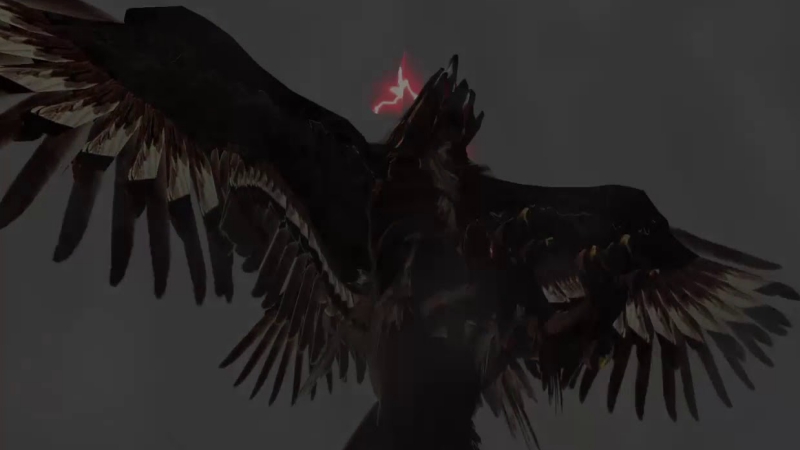
7. Griffon
Griffon is, design-wise, just a giant bird. Concept art and closer looks at his in-game model reveal a split-head design that’s actually pretty neat, but it’s rarely seen in game. Instead, what makes Griffon stand out are his multiple boss fights and his back-and-forth with Dante.
Dante’s battles against Griffon take him to courtyards, arenas, and a pirate ship sailing down an underground river. Like other repeated Devil May Cry boss fights, Griffon continues to challenge the player each time they meet by implementing different attacks and strategies that force the player to adapt. Devil May Cry‘s issues with camera during these fights notwithstanding, Griffon remains a wonderful example of how to use boss fights to give players a rival instead of just a barrier to entering the next level.
Of course, we also have to thank Griffon for one of the most memorable lines in the entire series. Thank you, giant bird, for letting Dante say “Flock off, featherface.” It’s dumb and I love it.
Rank: SS
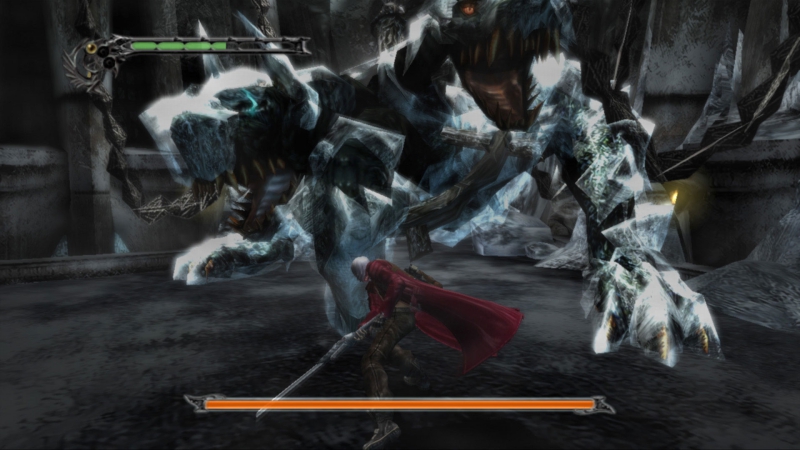
6. Cerberus
Technically, the Hell Vanguard is the first boss of Devil May Cry 3, but there’s a reason that chump isn’t up here with the big boys: he’s not that memorable. No, Cerberus is the first memorable boss fight in Devil May Cry 3.
Separating the humans from the demon hunters, Cerberus puts players skills to the test early in the game with a difficulty spike that doesn’t play around. He’s basically a three-headed “You must be this tall to ride” sign, except instead of a roller coaster, player’s get treated to more chances to get their asses kicked further down the line. Whoopee!
Adding in an iconic interaction with Dante and the fact that he turns into triple-ended Nunchucks for Dante to wield, Cerberus earns his spot at the top of the Devil May Cry 3 dog pile. He’s got it all; style, attitude, skin made of ice, and a flea collar.
Rank: SS
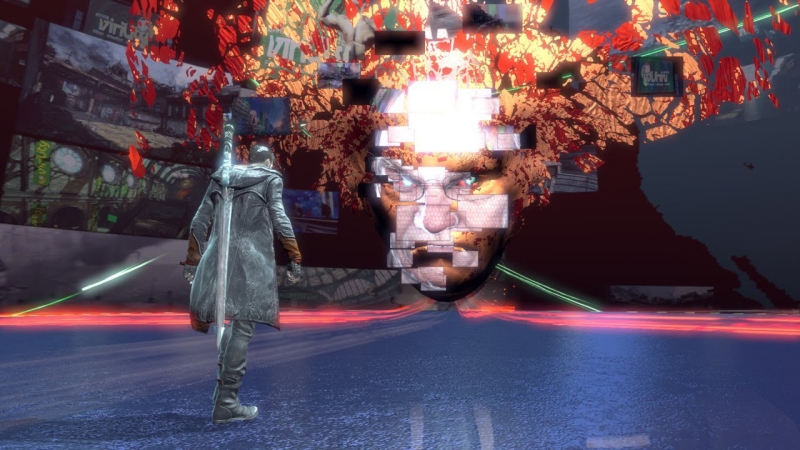
5. Bob Barbas
Off all the boss fights in DmC: Devil May Cry, Bob Barbas’ Tron-esque Fox News-flavored hell palace takes the cake on just about every level. A massive glitchy head that spews insults and datawaves at Dante, Bob Barbas is a great demonic adversary because of how challenging he can be to fight, and how easy he is to hate.
One of the more interesting things the boss fight does is taking liberties with the regular flow of Devil May Cry boss fights, throwing Dante into alternate arenas during extended sequences frames as news footage. As Bob Reports on videos of Dante fighting random demons, the stage goes from a simple boss battle to a unique twist on a traditional boss formula that Devil May Cry is already familiar with.
Of course, when he’s defeated, DmC‘s Bill O’Reilly stand-in grants players Aquila for their troubles. So not only do you get to fight a rich old white guy, but you get one of the game’s best weapons as well. Fight the power I guess.
Rank: SS
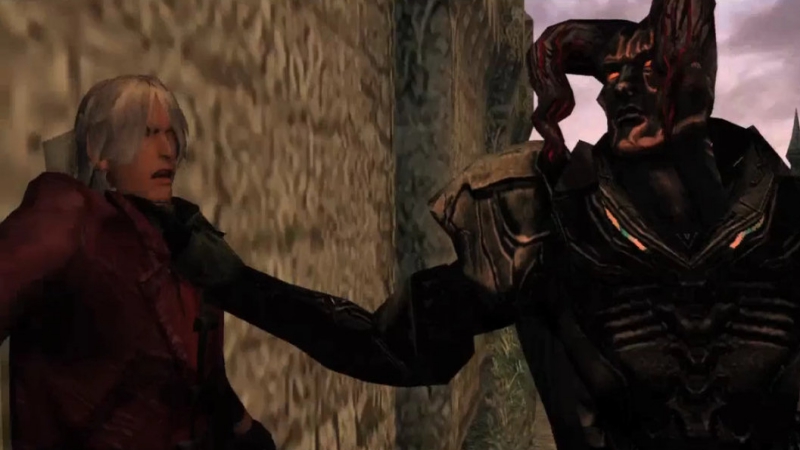
4. Nelo Angelo
In the isolated narrative of the first Devil May Cry game, Nelo Angelo’s story is a bit weak. However, taking into account the rest of the series, and Dante’s battles against his corrupted brother take on an epic new tone.
There is something wonderfully mythical about each battle with Nelo Angelo. A mysterious swordsman who is later revealed to be Dante’s brother Vergil, Nelo Angelo continues Devil May Cry‘s trend of repeating boss fights by adding additional challenges each time the player faces them. Whether set against a crumbling castle courtyard at sunset, or a gothic throne room at midnight, each fight brings unique challenges and new visual highlights.
Like all Vergil battles in the series, Nelo Angelo is fast and hits hard, but his patterns can be learned and adjusted to by skilled players. When he is finally defeated, the player gets the ability to use Sparda, the same sword wielded by Dante and Nero’s father. It’s a touching end to the brother’s arc (so far) and actually works better in hindsight than it did in 2001.
Rank: SS
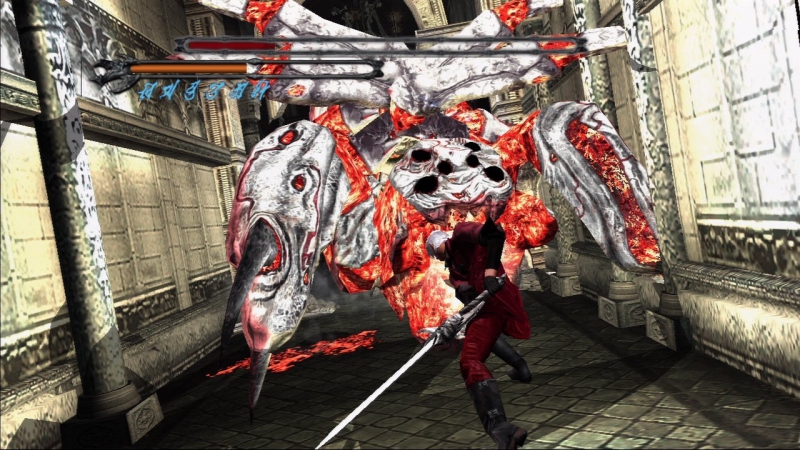
3. Phantom
If anybody played the first Devil May Cry or is even familiar with the series, they probably know about Phantom. This giant magma-spewing arachnid put a hard stop on many player’s first trips through the game with the firm challenge he poses. Once felled, however, Phantom serves as a wonderful first taste of victory for a series that has always prided itself on challenge.
His bizarre design is iconic in itself, perfectly amalgamating Resident Evil‘s penchant for giant animals and blending it with Devil May Cry‘s supernatural spin. As Dante and Phantom continue to fight over the course of the game, a bitter rivalry forms, turning what could have been a one-note villain into a memorable conquest.
With varied attacks and a non-obvious weak spot, he’s also consistently challenging. What’s more, he’s the only boss that can attack Dante outside of a boss fight, occasionally charging down the castle’s cramped hallways to catch unsuspecting players off guard.
You can’t beat a classic like this.
Rank: SS
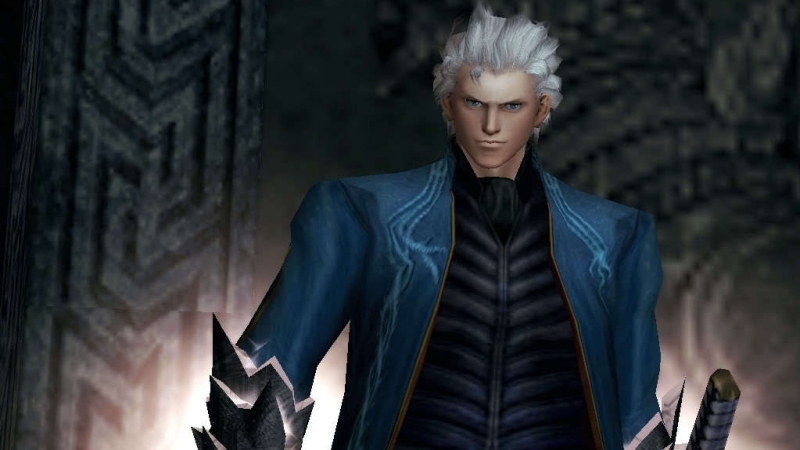
2.Vergil
The fan-favorite Devil In The Blue Coat, Vergil is Dante’s edgy brother and wielder of the sword Yamato, which was used by their father Sparda to separate the human and demon worlds.
With that backstory out of the way, Vergil is also the best antagonist in the series. His power-lusting arc in Devil May Cry 3 results in the series’ best story so far, and his interactions with his brother are easily the highlight of the game, right next to the several boss fights against him.
As Dante gains new weapons and abilities, so too does Vergil, resulting in drastically different fights each time the pair face off. Vergil’s own journey of self-improvement results in the second best fight in the entire series, where Dante defeats Vergil once and for all and loses his brother to the darkness.
In terms of style, he’s the polar opposite of Dante. Cool and reserved (and actually wearing a shirt), Vergil could have been just a pretentious edgelord if handled poorly, but his original incarnation remains one of the best characters in the series in every way possible.
Rank: SSS
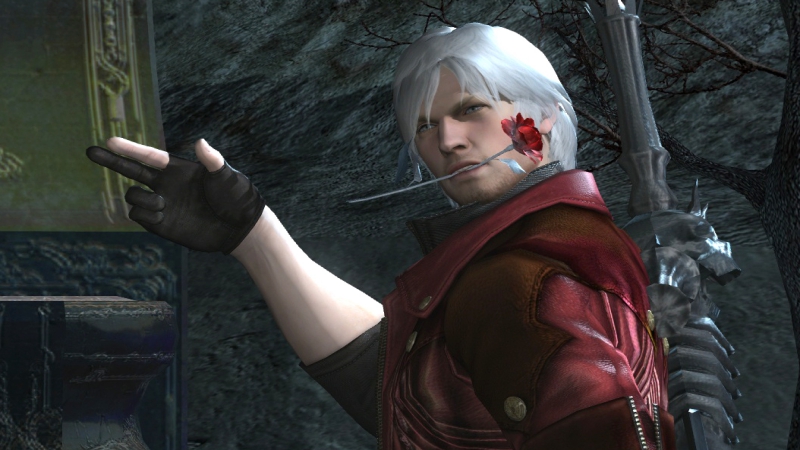
1. Dante
Who else could possibly top this list other than the most stylish mofo in the entire series? During Nero’s half of the Devil May Cry 4 campaign, Dante throws down with the plucky newcomer over ownership of Vergil’s sword Yamato. The result is one of the most challenging boss fights in the series; Dante has all four of his variations at his disposal, and easily dodges Nero’s Devil Bringer and forward slashing attacks.
It’s a bit of a shame the fight comes during Devil May Cry 4‘s halfway point; it’s more challenging than most of the late-game battles against Sanctus and The Savior. It’s really the perfect representation of what playing against Dante should be like, giving the legendary devil hunter just as many tools as the player and forcing them to think on their feet defensively and offensively if they want to survive.
And of course, who else has enough style to top this list? Sure, Vergil has swagger to spare, but with his red leather, sword, and especially his Devil May Cry 4 stubble, Dante remains the pinnacle of style in the Devil May Cry series. He’s a badass, he’s a goofball, and we all love him.
Rank: SSS

 Bad_Durandal
Bad_Durandal
